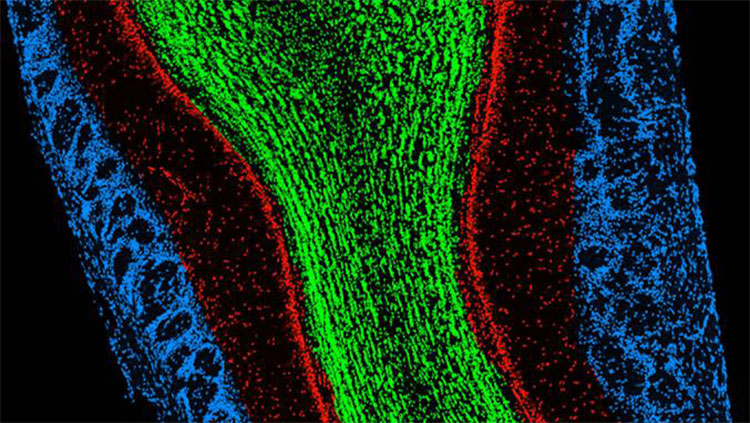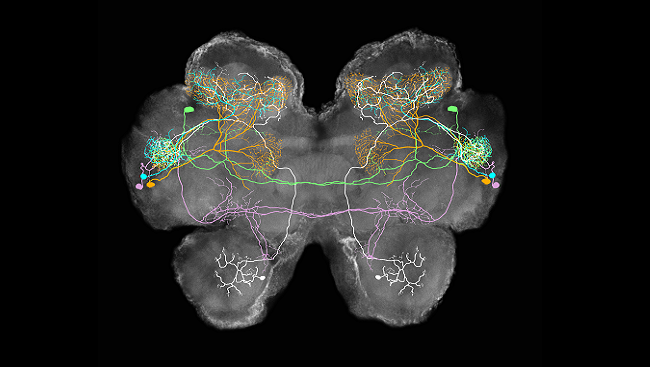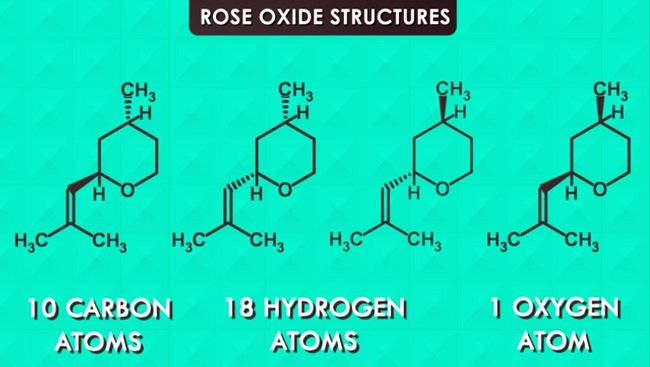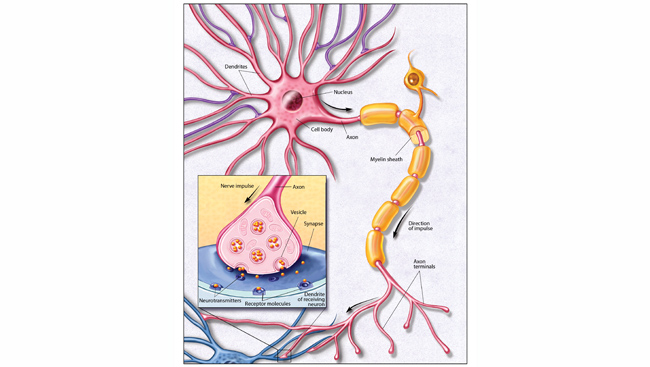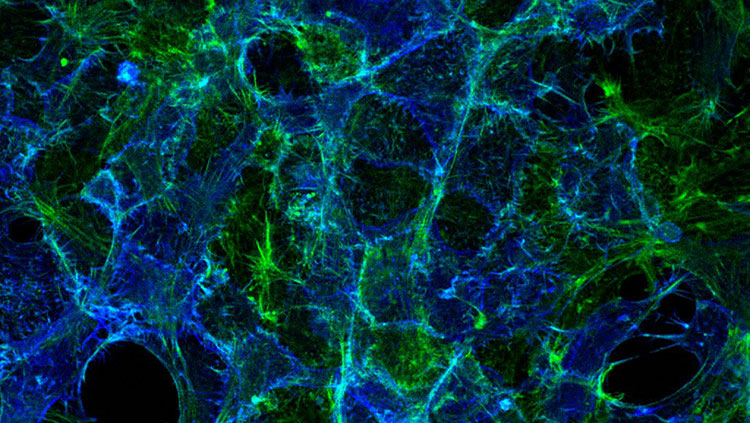Processing Smell
- Published20 Oct 2014
- Reviewed20 Oct 2014
- Author Michael W. Richardson
- Source BrainFacts/SfN
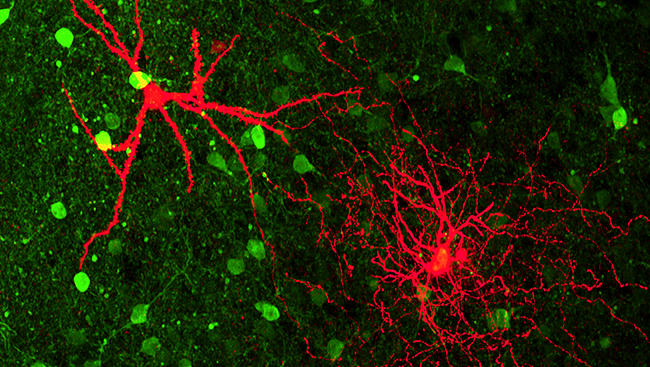
A scent can say a lot about the environment. For animals in the wild, the ability to quickly discern and react to the scent of a potential mate or stalking predator can be a matter of life and death. The processing of smell information requires the efficient communication between odorant receptors lining the nasal passages and neurons in the brain.
This image shows two types of neurons (pictured in red) — located in the medial amygdala of a mouse — which are involved in the emotional processing of odor information. While both types receive scent information, they communicate this information to different cells — which is reflected in their projections. The cell on the top-left relays information to the hypothalamus some distance away, a brain region important in reproductive and defense behaviors. The bottom-right cell communicates with nearby neurons to dampen the signals they send. Together, these cells help the animal to know whether to prepare for courtship or to flee for safety.
CONTENT PROVIDED BY
BrainFacts/SfN




